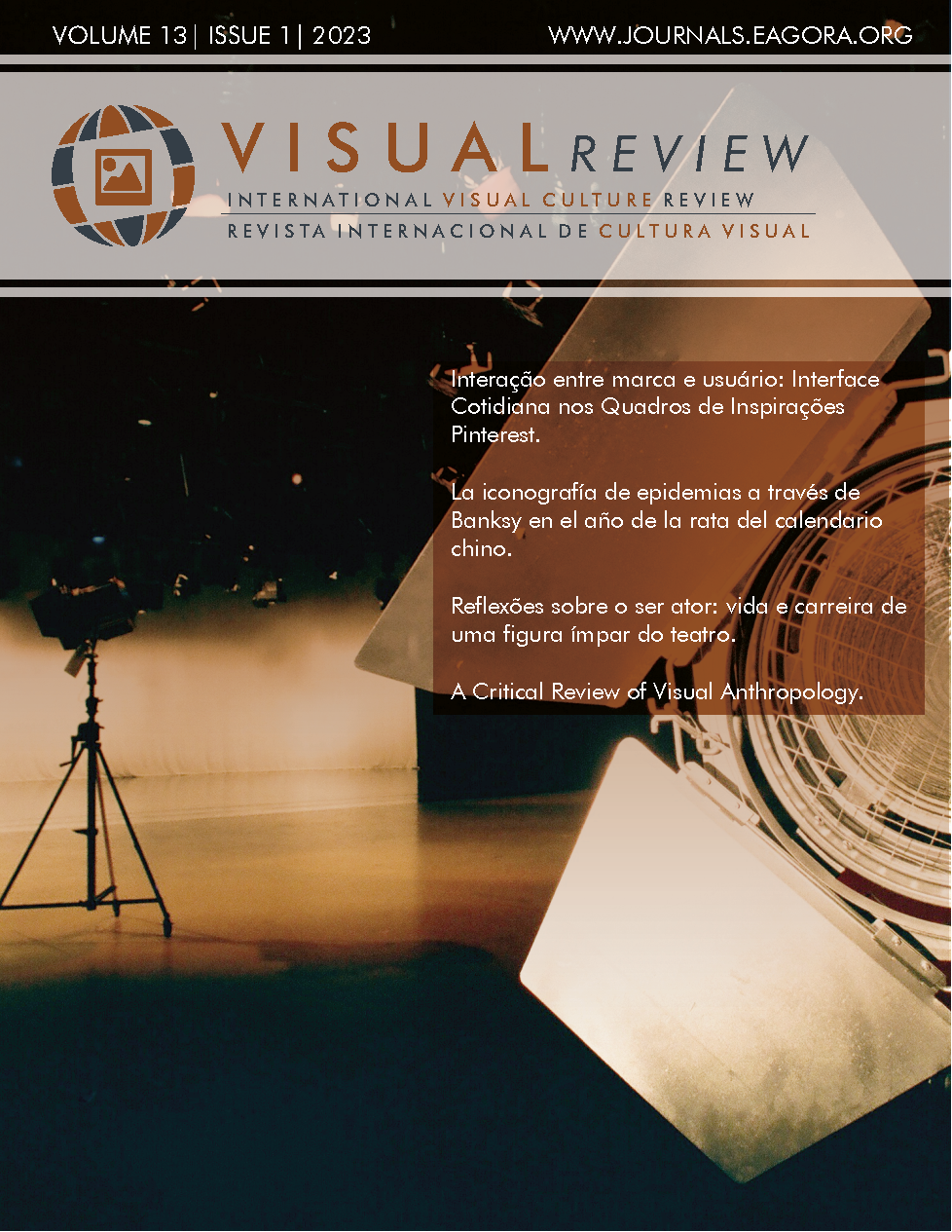The field diary from the Alicia Model to design scientific infographics
A collaborative autoethnographic resource to guide information design
DOI:
https://doi.org/10.37467/revvisual.v10.3446Keywords:
Field journal, Information design, Scientific infographic, Design model, Ethnography design, Action researchAbstract
This paper aboard a new infographic design model that combines information design with ethnography. The field diary allows collecting the experience of graphic designers who have followed the Alicia model to design scientific infographics. Through participative action research and design ethnography, journals represent a collaborative autoethnography where narrative intervenes; establishing qualitative categories, it has been performed an interpretative process from notes in the journals. Positive results have been collected about the efficiency of the model, it facilitates the infographics design experience and allows the development of design thinking in practitioners that make scientific infographics.
Downloads
References
Adams, T. E., Holman Jones, S., & Ellis, C. (2014). Autoethnography: Understanding qualitative research (First Edition). Oxford University Press. https://doi.org/10.1002/capr.12111 DOI: https://doi.org/10.1002/capr.12111
Alzate Yepes, T., Puerta C., A. M., & Morales, R. M. (2008). Una mediación pedagógica en educación superior en salud. El diario de campo. Revista Iberoamericana de Educación, 47(4), 1–10. https://doi.org/10.35362/rie4742301 DOI: https://doi.org/10.35362/rie4742301
Badillo Gaona, M. (2021). Investigación en la acción: Propuesta de formación alternativa. Mercados y Negocios, 44, 67–94. https://doi.org/10.32870/myn.v0i44.7643 DOI: https://doi.org/10.32870/myn.v0i44.7643
Blanco, M. (2011). Investigación narrativa: Una forma de generación de conocimientos. Argumentos, 24(67), 135–156. Consultado el 11 de mayo de 2022 de https://argumentos.xoc.uam.mx/index.php/argumentos/article/view/278
Blanco, M. (2012a). ¿Autobiografía o autoetnografía? Desacatos, 38, 169–178. Consultado el 09 de mayo de 2022 de https://www.scielo.org.mx/pdf/desacatos/n38/n38a12.pdf
Blanco, M. (2012b). Autoetnografía: Una forma narrativa de generación de conocimientos. Andamios, Revista de Investigación Social, 9(19), 49–74. https://doi.org/10.29092/uacm.v9i19.390 DOI: https://doi.org/10.29092/uacm.v9i19.390
Blanco, M. (2017). Investigación narrativa y autoetnografía: Semejanzas y diferencias. Investigación Cualitativa, 2(1), 66–80. Consultado el 09 de mayo de 2022 de https://www.academia.edu/33544203/Narrativas_y_autoetnograf%C3%ADa
Chang, H., Ngunjiri, F., & Hernandez, K.-A. C. (2013). Collaborative Autoethnography (First Edition). Routledge. https://doi.org/10.4324/9781315432137 DOI: https://doi.org/10.4324/9781315432137
Clancey, W. J. (2017). The reflective science of ethnography and its role in pragmatic design. Constructivist Foundations, 13(1), 73–76. Consultado el 21 de mayo de 2022 de https://constructivist.info/13/1/073
de Beer, C. (2018). Rethinking visual journaling in the creative process: Exploring pedagogic implications. South African Journal of Higher Education, 32(1), 90–111. https://doi.org/10.20853/32-1-1819 DOI: https://doi.org/10.20853/32-1-1819
Dull, A. (2021). Informing without Conforming: Applying Two Frameworks to Enrich Autoethnography. The Qualitative Report, 26(11), 3307–3317. https://doi.org/10.46743/2160-3715/2021.5030 DOI: https://doi.org/10.46743/2160-3715/2021.5030
Ellis, C., Adams, T. E., & Bochner, A. P. (2010). Autoethnography: An overview. Forum Qualitative Sozialforschung / Forum: Qualitative Social Research, 12(1), 1–18. https://doi.org/10.17169/fqs-12.1.1589
Espinoza Cid, R. A., & Ríos Higuera, S. (2017). El diario de campo como instrumento para lograr una práctica reflexiva. Memoria electrónica del Congreso Nacional de investigación educativa, 3(3), 1–11. Consultado el 07 de mayo de 2022 de https://tinyurl.com/yrfz2bu9
González de Cossío, M. (2016). Diseño de Información y vida cotidiana. Editorial Designio.
Hanington, B., & Martin, B. (2021). The pocket universal methods of design (Kindle edition). Rockport Publishers.
Horn, R. E. (2000). Information Design: Emergence of a new profession. En R. Jacobson (Ed.), Information Design (pp. 15–33). The MIT Press.
Lankow, J., Ritchie, J., & Crooks, R. (2012). Infographics. The power of visual storytelling. Wiley.
Luna-Gijón, G., Nava-Cuahutle, A. A. y Martínez-Cantero, D. A. (2022). El diario de campo como herramienta formativa durante el proceso de aprendizaje en el diseño de información. Zincografía. https://doi.org/10.32870/zcr.v6i11.131 DOI: https://doi.org/10.32870/zcr.v6i11.131
Müller, F. (2021). Design Ethnography: Epistemology and Methodology. Springer International Publishing. https://doi.org/10.1007/978-3-030-60396-0 DOI: https://doi.org/10.1007/978-3-030-60396-0
Mullick, P. D., & Mukherjee, K. (2018). The Dimensions of Fieldnotes in ethnographic research: An introduction. IOSR Journal Of Humanities And Social Science, 3(5), 31–35. Consultado el 21 de mayo de 2022 de https://tinyurl.com/4ztx9tev
Newbury, D. (2001). Diaries and fieldnotes in the research process. Research Issues in Art Design and Media, 1. Consultado el 21 de mayo de 2022 de https://bit.ly/3j7ZRNA
Núñez-Rojas, N., Orrego-Zapo, J., Noriega-Sánchez, C. A., & Alejandría, Y. (2021). Formación de competencias docentes desde la investigación-acción. Formación universitaria, 14(4), 133–142. https://doi.org/10.4067/S0718-50062021000400133 DOI: https://doi.org/10.4067/S0718-50062021000400133
Pettersson, R. (2010). Information Design–Principles and Guidelines. Journal of Visual Literacy, 29(2), 167–182. https://doi.org/10.1080/23796529.2010.11674679 DOI: https://doi.org/10.1080/23796529.2010.11674679
Pontis, S. (2019). Making sense of field research. A practical guide for information designers. Routledge. DOI: https://doi.org/10.4324/9781315213613
Ramadhanti, D., Ghazali, A. S., Hasanah, M., Harsiati, T., & Yanda, D. P. (2020). The Use of Reflective Journal as a Tool for Monitoring of Metacognition Growth in Writing. International Journal of Emerging Technologies in Learning, 15(11), 162–187. https://doi.org/10.3991/ijet.v15i11.11939 DOI: https://doi.org/10.3991/ijet.v15i11.11939
Rangel Arenas, A. M., Mas Y Rubi, M., & Civitillo Hernandez, F. J. (2020). Estrategias didácticas para expresar la información técnica a las comunidades de bajos recursos bajo el enfoque de la responsabilidad social. Revista Internacional de Tecnología, Conocimiento y Sociedad, 8(1), 9–19. https://doi.org/10.18848/2474-588X/CGP/v08i01/9-19 DOI: https://doi.org/10.18848/2474-588X/CGP/v08i01/9-19
Sanjek, R. (1990). A vocabulary for fieldnotes. En R. Sanjek (Ed.), Fieldnotes: The makings of Anthropology (First edition, pp. 92–121). Cornell University Press. DOI: https://doi.org/10.7591/9781501711954
Wesely, J. K. (2021). Skimming the Surface or Digging Deeper: The Role of Emotion in Students’ Reflective Journals During an Experiential Criminal Justice Course. Journal of Experiential Education, 44(2), 167–183. https://doi.org/10.1177/1053825920952829 DOI: https://doi.org/10.1177/1053825920952829
Wood, A. E., & Mattson, C. A. (2019). Quantifying the effects of various factors on the utility of design ethnography in the developing world. Research in Engineering Design, 30(3), 317–338. https://doi.org/10.1007/s00163-018-00304-2 DOI: https://doi.org/10.1007/s00163-018-00304-2
Downloads
Published
How to Cite
Issue
Section
License
Those authors who publish in this journal accept the following terms:
- Authors will keep the moral right of the work and they will transfer the commercial rights.









